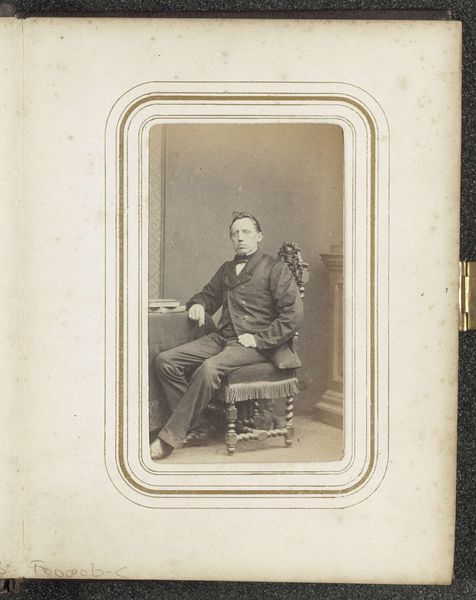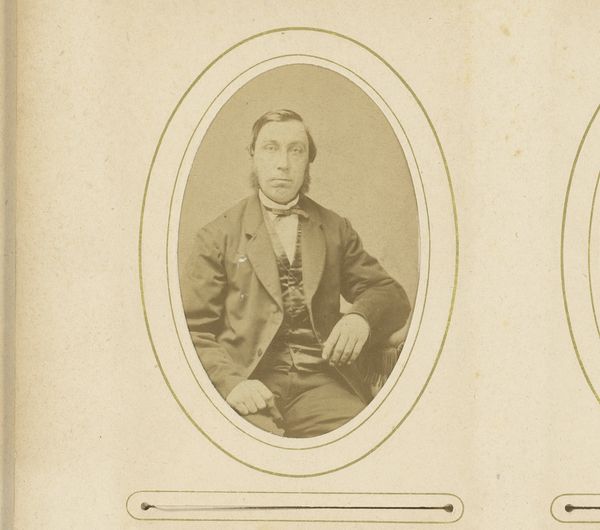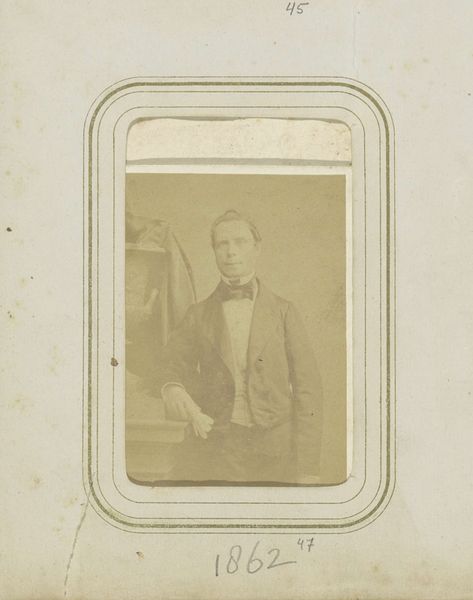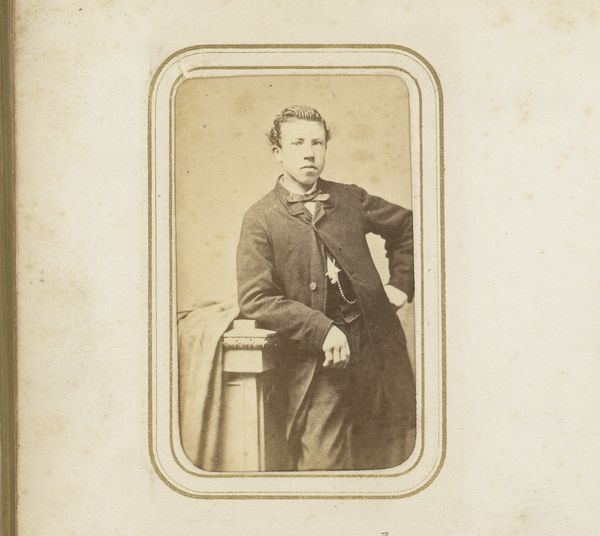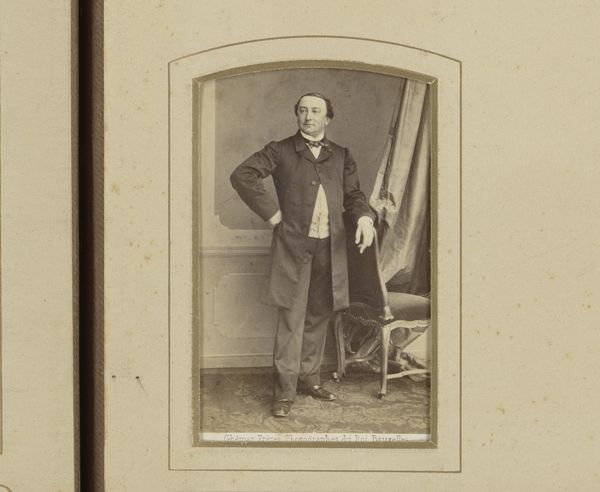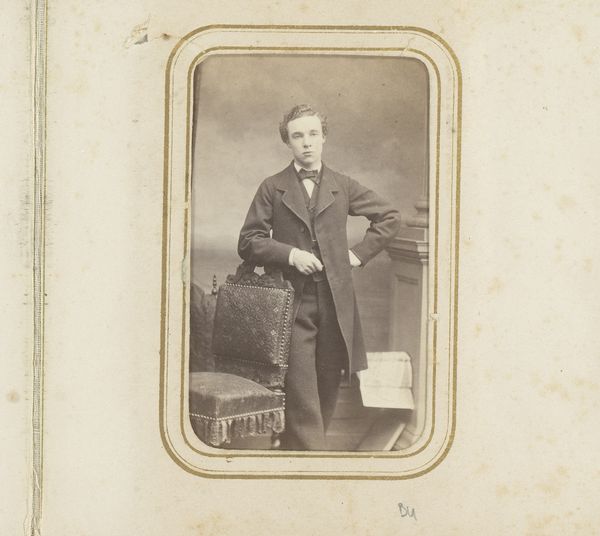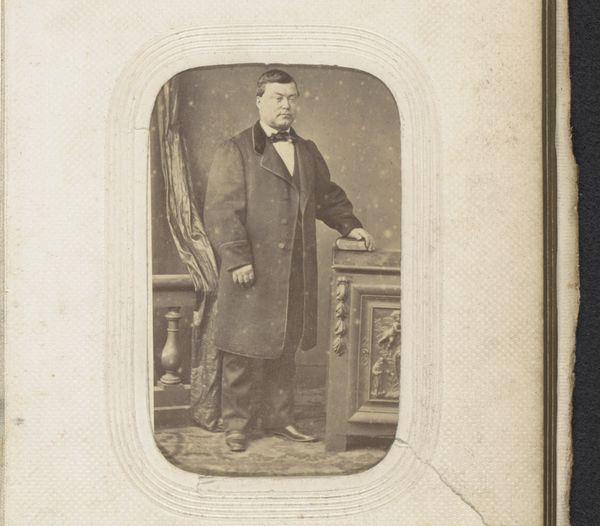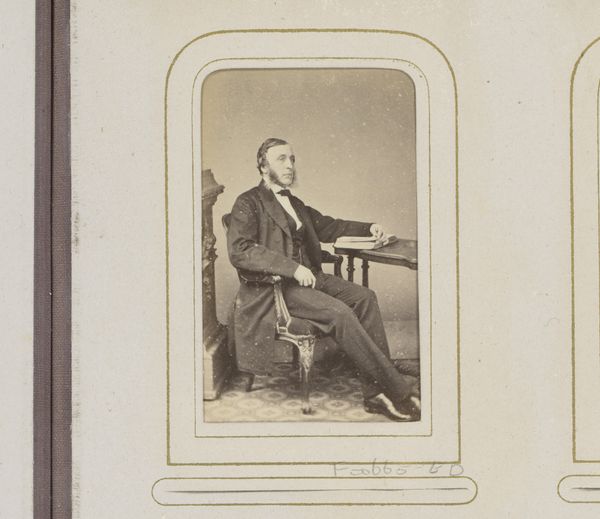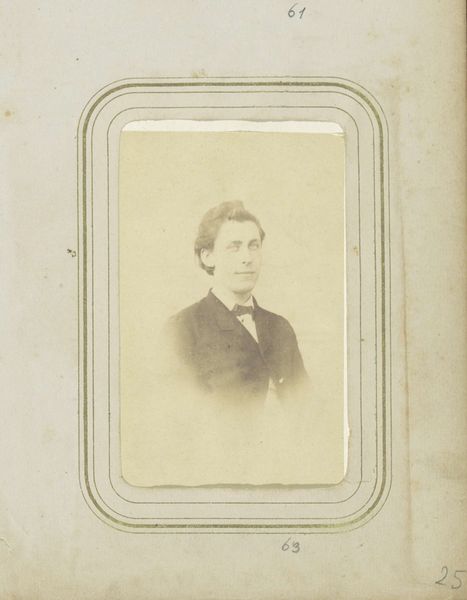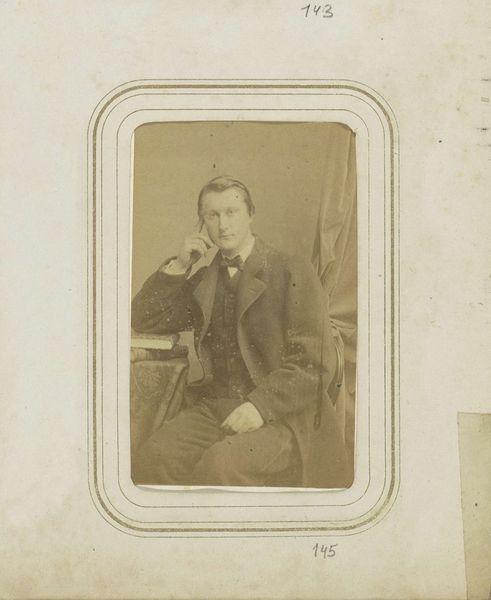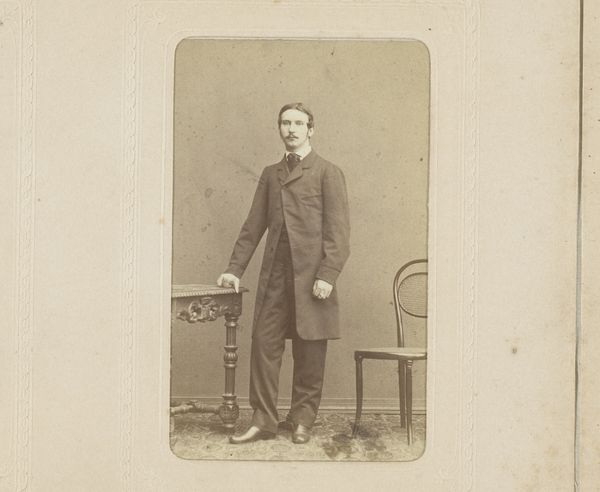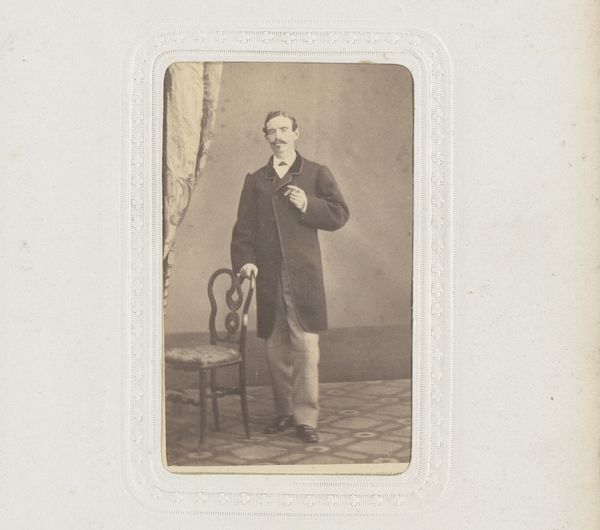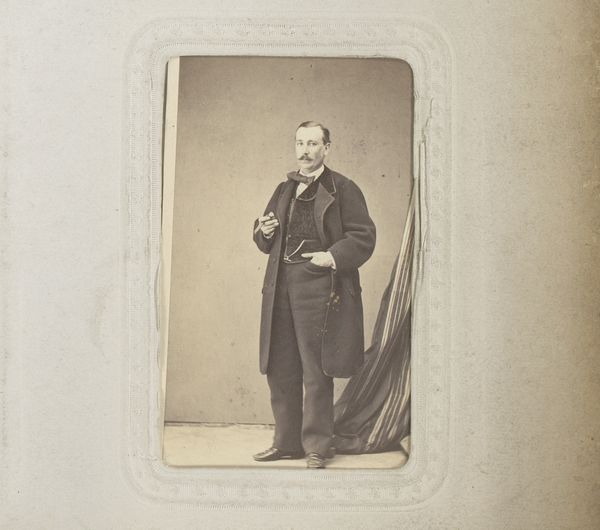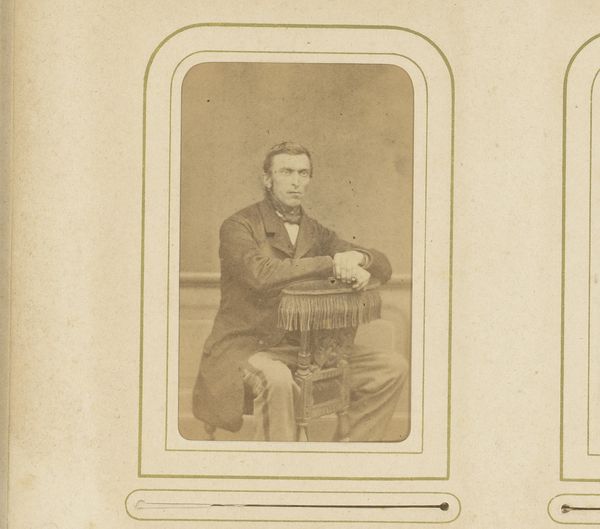
Portret van een zittende man met een baard en een halsdoek c. 1850 - 1889
0:00
0:00
franzwilhelmdeutmann
Rijksmuseum
paper, photography, gelatin-silver-print
#
portrait
#
16_19th-century
#
paper
#
photography
#
coloured pencil
#
gelatin-silver-print
Dimensions: height 86 mm, width 57 mm, height 106 mm, width 60 mm
Copyright: Rijks Museum: Open Domain
Curator: The photographic print before us, likely a gelatin silver print dating between 1850 and 1889, is titled "Portret van een zittende man met een baard en een halsdoek"—"Portrait of a Seated Man with Beard and Cravat"—attributed to Franz Wilhelm Deutmann. Editor: He looks...tired. Weary, even. Is it just the sepia tones, or do you get a sense of someone burdened by the weight of the era? Curator: The mid-19th century was a time of great transformation. What we see, beyond fatigue, is a face reflecting emergent ideals of middle-class respectability, signaled by the carefully groomed beard and neat cravat. A visual marker of social climbing. Editor: Respectability often comes at the cost of suppressing something else. Look at the subtle tension in his shoulders, the averted gaze...the closed body language hints at anxieties simmering beneath the surface, reflective of patriarchal expectations in those times. Curator: The symbolism of clothing is never accidental, of course. But note, too, how portrait photography itself functioned. It was a relatively new technology becoming more accessible. Representing yourself photographically carried a distinct message, that of modernity and forward thinking. Editor: Photography was definitely democratizing representation, though still filtered through very specific power structures. Whose stories are *not* being told through portraiture? I'm always thinking about who is missing from the frame. Curator: A valid point. It prompts contemplation beyond the subject's visible circumstances toward the broader societal exclusions, yes. Each photograph, in essence, then also contains echoes of collective memory. Editor: Memory, and imposed silences. I find the act of consciously acknowledging those absences allows us to re-contextualize these historical images in our present struggles for visibility and social justice. Curator: Precisely. It reveals how images act as both documents and constructs. This opens conversations around agency, representation, and even the lingering echoes of power. Editor: A very vital lens for looking at this artwork and any image from this time, truly. Curator: I appreciate how situating the image within intersecting power dynamics expands what we thought this photograph was expressing. Editor: Definitely, this was an insightful experience. I’m eager to learn how the listeners react to this particular portrait!
Comments
No comments
Be the first to comment and join the conversation on the ultimate creative platform.
